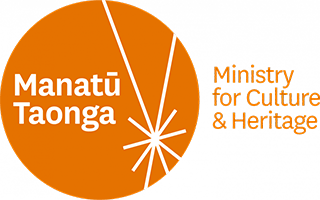This past weekend, Haumanu Collective had the privilege of supporting a transformative karetao wānanga at Kirikiriroa Marae in Hamilton. Held from November 1-3, this event brought together a passionate community of artists, cultural practitioners, and whānau to celebrate and revitalize the art of Māori puppetry. Over the course of the weekend, participants engaged deeply with karetao, exploring their roles in storytelling, healing, and cultural expression, and building a foundation for further growth.
A Journey of Rediscovery and Revitalization
This wānanga was more than a workshop; it was an act of preserving mātauranga Māori, the knowledge and heritage passed down by our tīpuna. Through crafting, storytelling, and performance, we are breathing new life into karetao, an art form with rich roots in Māori culture.
We were honored to have Te Ahukaramū Charles Royal share insights on Te Whare Tāpere—the traditional Māori houses of entertainment—and the cultural significance of karetao within these spaces. His kōrero underscored how karetao are essential tools for connecting people through stories and values. Charlotte Graham, an artist committed to the revitalization of karetao, offered her unique perspective on their potential as symbols of resilience, identity, and cultural pride. Her kōrero illustrated how these taonga carry forward the strength of our tūpuna.
Adding further depth, we heard from Dr. Awhina Tamarapa, who presented her work building relationships with museums worldwide to locate and document collections of karetao. Her dedication to tracing and reconnecting with these taonga emphasizes their global significance and the importance of preserving their cultural heritage for future generations.
We were also privileged to hear from our core hosts James Webster and Hinemoa Jones, who shared their expertise in making and performing with karetao pūoro—karetao that also serve as taonga pūoro. Their work adds a musical dimension to these puppets, merging sound and movement to bring out the mauri—the life force—within these taonga. James and Hinemoa’s kōrero and hands-on workshops inspired participants to see karetao not just as objects, but as living expressions that blend traditional roots with contemporary innovation.
Karetao as Tools for Healing and Connection
Karetao are not only powerful vehicles for cultural expression; they also hold potential for healing and emotional connection. The wānanga highlighted how personifying feelings through karetao can create a safe space for emotional expression, particularly for those who find it difficult to share emotions directly. For people who have experienced grief, trauma, or mental health challenges, karetao can provide a culturally grounded way to process emotions and find comfort.
This potential for healing and connection is particularly significant for rangatahi (youth). Engaging young people with karetao offers them a meaningful way to explore their identity and heritage, helping them build a sense of pride and resilience as they carry this taonga forward.
Looking Forward: Aspirations for Building on the Momentum
This karetao wānanga has inspired a vision for the future of Māori puppetry, and there are many ways we as a community can build on this momentum together. Here are some aspirational ideas for how we might continue to nurture this art form and deepen its presence in our lives, homes, and communities:
- Creating More Wānanga and Learning Spaces
Imagine a series of wānanga across Aotearoa, each focusing on different aspects of karetao—storytelling, craftsmanship, and blending with taonga pūoro. Community-led wānanga could also focus on rangatahi, providing them with mentorship and leadership opportunities, and nurturing young kaitiaki to carry this art form forward. Each gathering can strengthen our collective knowledge and sense of connection. - Bringing Karetao into Our Homes and Whānau Spaces
Karetao can be powerful tools for fostering learning and connection at home. Families might use karetao to tell stories, teach tikanga, or share whakapapa with tamariki in a hands-on, engaging way. As more whānau bring karetao into their lives, tamariki can build early, meaningful connections to their heritage, instilling pride in their culture and creating memories that will last a lifetime. - Nurturing Karetao as a Pathway for Healing and Wellbeing
For those experiencing loss, trauma, or mental health challenges, karetao offer a gentle way to express emotions that might otherwise be difficult to voice. By personifying feelings through these taonga, individuals can find a safe and supportive way to process their emotions. Community support could include wānanga focused on using karetao for emotional expression and healing, creating spaces that help bring comfort and connection through culturally grounded practices. - Building Digital Resources and Sharing Knowledge Widely
As a community, we can work together to document and share the teachings of knowledgeable practitioners—such as Te Ahukaramū, Charlotte, James, Hinemoa, and Dr. Tamarapa—through online tutorials, videos, and digital storytelling. By making this knowledge accessible online, whānau across the country and beyond can access and learn from these taonga at their own pace, ensuring that learning is accessible, inclusive, and continues to grow. - Creating Exhibitions, Performances, and Collaborations with Museums
Community-led exhibitions could celebrate karetao across different cultures and showcase the unique beauty of Māori puppetry. Regular karetao pūoro performances could bring the art form to public audiences, inviting people from all walks of life to experience the vibrancy and mauri of these taonga. We could also envision partnerships with museums for exhibitions, workshops, and research initiatives, which would create more opportunities for public engagement and foster a deeper appreciation of karetao as living expressions of culture. - Advocacy and Educational Outreach for Future Generations
We can use social media to share the stories, history, and significance of karetao, creating a platform for widespread learning and advocacy. As a community, we might consider developing educational resources for schools, introducing karetao to tamariki early on, and inspiring future kaitiaki of this art form. By promoting the importance of karetao within education, we can support a generation of young people who understand and respect these taonga as an essential part of their cultural identity.


